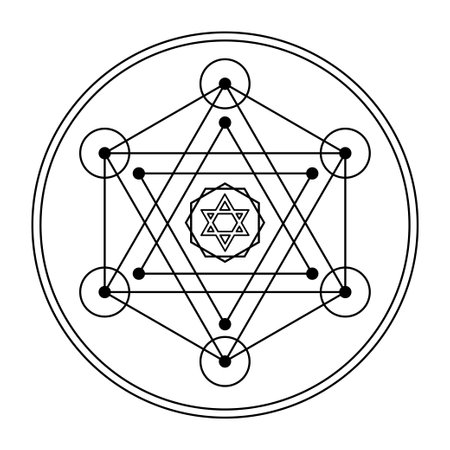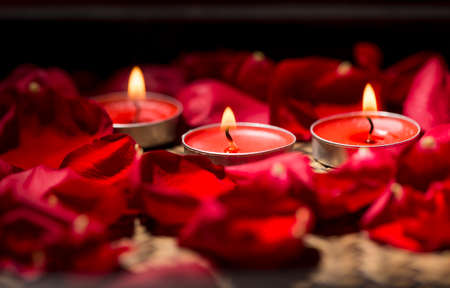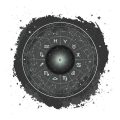Introduction: The Morrigan in British Celtic Lore
If you wander through the mist-laden moors or ancient stone circles of Britain, it is easy to sense the echoes of the past, where myth and reality intertwine. Among these spectral presences, few are as compelling or enigmatic as the Morrigan—a figure who emerges from the shadowy heart of Celtic lore. Known as the goddess of fate, war, and prophecy, the Morrigan’s legend has haunted the British Isles for centuries, weaving her influence through both ancient tales and contemporary imaginations. Her story is not merely an artifact of a bygone era; rather, she continues to shape how Britons perceive destiny, conflict, and transformation even today. In modern Britain, from literature to local folklore festivals, the Morrigan’s legacy lingers, inviting us to explore the deep roots of our cultural psyche and challenging us to confront the mysteries that lie at the intersection of history and myth.
2. The Faces of the Morrigan: Shape-Shifter and Triple Goddess
When delving into the enigmatic world of the Morrigan, one quickly discovers she is far from a straightforward figure in Celtic mythology. Instead, she embodies a fascinating tapestry of identities—sometimes appearing as a singular goddess, at other times manifesting as a powerful triad of sisters. This intricate duality is not merely mythological fancy; it reflects deep-rooted British Celtic traditions that celebrate the complexity and fluidity of divine power.
The Single Entity: Morrigan as the Phantom Queen
In many Irish and British legends, the Morrigan emerges as the “Phantom Queen,” a solitary, shape-shifting force presiding over fate and battle. Her ability to change forms—raven, wolf, eel or woman—underscores her unpredictable and transformative nature. This aspect resonates with British folklore’s fascination with liminality, where boundaries between worlds and identities blur, echoing the mist-laden landscapes of ancient Albion.
The Triple Goddess: Sisters in Power
Yet, the Morrigan is equally celebrated as a triad—a grouping common in Celtic cosmology. She may appear as three distinct sisters: Badb (“Crow”), Macha (“Sovereignty”), and Nemain (“Frenzy”). Each represents a facet of war, prophecy, and sovereignty, weaving together themes central to both Irish and British Celtic storytelling.
Triad Table: The Morrigan’s Three Faces
| Name | Attributes | Cultural Resonance |
|---|---|---|
| Badb | War cry, transformation into crow, battlefield chaos | Symbolises omens and fate in battle; echoes British raven lore |
| Macha | Sovereignty, fertility, endurance | Tied to kingship rituals; links to sites like Armagh (Ard Mhacha) |
| Nemain | Panic, frenzy, confusion in war | Embodies psychological warfare; parallels British stories of spectral women on battlefields |
Intertwining with British Celtic Traditions
This concept of triple goddesses finds echoes across Britain—in deities such as the Matres or local “Mothers” venerated from Roman Britain to Scotland. Such figures remind us that the Morrigan’s multifaceted identity isn’t just Irish lore—it reflects a broader pan-Celtic worldview where power is complex, shared, and always evolving. Her presence on British soil symbolises the enduring legacy of mythic women who shape destinies—not only in legend but woven into local customs and landscape lore even today.

3. Goddess of War: From Battlefield to Bard
The Morrigan’s presence on the battlefield was nothing short of electrifying—her name alone whispered in the mists before dawn could send shivers down even the bravest warrior’s spine. In Celtic lore, she is not simply a participant in war; she embodies its chaos, its dread, and its strange allure. Whether appearing as a lone crow perched atop a bloodied shield or as a spectral woman weaving victory and defeat, The Morrigan was both omen and instigator. Her arrival foretold doom, yet for the Celts, she was also an indispensable muse—a force that galvanised men to acts of legendary bravery or desperate valour.
British folklore absorbed these tales with typical relish, transforming The Morrigan into a figure who straddles terror and inspiration. Across the windswept moors and ancient battlefields of Britain, echoes of her legend persist—she is at once the fearsome spectre glimpsed at twilight and the rallying cry for those with no choice but to fight on. Local storytellers wove her image into bardic tradition, making her both the literal harbinger of death and the figurative spark behind countless epic poems. In this way, The Morrigan’s legacy moves seamlessly from grim prophecy on the battlefield to lyrical inspiration by the fireside—a duality that continues to fascinate anyone drawn to the darker corners of British myth.
4. Mistress of Fate and Prophecy
The Morrigan’s influence extends far beyond the battlefield; she is revered as a formidable weaver of destiny, intimately entwined with the fate of individuals and nations across British myth. In the Celtic imagination, fate was not an abstract concept but a living force, often personified by The Morrigan herself. She embodies prophecy, appearing at crucial moments to foretell doom or victory, and her presence is both a warning and a promise.
The Weaving of Destiny
The Morrigan’s role as a mistress of fate is deeply rooted in her ability to shape outcomes. Unlike passive oracles, she actively participates in the unfolding of events—her prophecies are catalysts for action or caution. In tales from Irish and British folklore, warriors encountering The Morrigan often receive cryptic warnings or dire visions. These encounters are never random; they are woven into the fabric of fate itself.
Prophetic Encounters in Myth
| Mythical Event | The Morrigan’s Prophecy | Outcome |
|---|---|---|
| Battle of Mag Tuired | Foretold victory for the Tuatha Dé Danann, but warned of losses | Tuatha Dé Danann win, but at great cost |
| Cúchulainn’s Final Battle | Predicted Cúchulainn’s death after appearing as a crow | Cúchulainn falls in battle, fulfilling her prophecy |
| Legendary Kingship Challenges | Warned would-be kings through omens and spectral appearances | Kings’ fates shaped by their response to her signs |
Influence on British Leaders and Battles
The Morrigan’s reach can be felt in echoes throughout later British legends. Her archetype surfaces in tales where fate seems inevitable—Arthurian legends, for instance, borrow from Celtic roots in their depictions of seers and fatal prophecies surrounding King Arthur’s reign. In this way, The Morrigan stands as both a guardian and a challenger: those who heed her warnings may alter their path, while those who ignore her often meet tragic ends.
5. Land, Sovereignty, and the Spirit of Britain
To truly understand the Morrigan’s enduring legacy, we must look beyond her fierce image on the battlefield and delve into her profound connection with the land itself. In ancient Celtic belief, goddesses like the Morrigan did not merely preside over war; they embodied the very spirit of the land, acting as its protectors and arbiters of sovereignty. The Morrigan’s shape-shifting nature – whether as a crow wheeling over blood-soaked fields or as a spectral woman washing warriors’ armour by the river – reflects her intimate bond with rivers, hills, and sacred sites across what we now call Britain and Ireland. Her presence signified not just impending fate but also the rightful claim to rule, symbolising that true sovereignty could only be conferred by the land through divine favour.
For centuries, this notion echoed throughout British myth and history. Medieval tales such as those of King Arthur often hinge upon mysterious women associated with water or wild places who grant (or withdraw) legitimacy to rulers. These narratives carry faint but persistent traces of the Morrigan’s archetype – a reminder that leadership is inseparable from respect for land and its spiritual guardians. Even today, in an era far removed from pagan ritual, echoes of this tradition remain woven into our sense of heritage. The rolling mists of Dartmoor, the ancient stones at Avebury, or even the reverence shown to rural landscapes all reflect an ongoing relationship between people, place, and power.
In contemporary British culture, debates about national identity and stewardship frequently invoke heritage and landscape as touchstones. The Morrigan’s symbolism prompts us to reconsider these connections: who has the right to speak for the land? What responsibilities come with belonging? As environmental concerns grow ever more urgent, her mythic narrative offers a strikingly modern message about custodianship and mutual obligation. Far from being relegated to dusty folklore, the Morrigan stands as a potent emblem of Britain’s living spirit—a guardian whose relevance endures wherever people engage thoughtfully with their environment and cultural inheritance.
6. Modern Echoes: The Morrigan in British Pop Culture and Neo-Paganism
The Morrigan, once shrouded in the mists of ancient Celtic myth, now finds herself reborn in the vibrant heart of contemporary British culture. Her fierce image and enigmatic symbolism have migrated from Iron Age legends into the living fabric of modern Britain—her influence palpable in literature, art, local festivals, and the evolving landscape of neo-pagan spirituality.
Literature and Art: A Timeless Muse
Across the UK’s bookshelves and galleries, the Morrigan continues to inspire writers and artists seeking to channel her mystique. She is often depicted as a figure of feminine power and transformation in contemporary fantasy novels—her name surfacing in works by British authors exploring themes of fate, war, and prophecy. Visual artists reinterpret her imagery through bold installations and striking canvases, blending Celtic motifs with current social narratives. This creative resurgence speaks to the Morrigan’s enduring relevance as a symbol of resilience and defiance against adversity.
Festivals: Reviving Ancient Traditions
The echoes of the Morrigan’s mythos are especially resonant during seasonal festivals that celebrate Britain’s pre-Christian roots. At Beltane fire festivals in Scotland or Samhain gatherings across England and Wales, participants don raven feathers and paint their faces in homage to her legendary shapeshifting forms. These events offer more than spectacle—they serve as communal rituals reconnecting modern Britons with ancestral wisdom and the cycles of nature.
Neo-Pagan Practice: Living Spirituality
Within the diverse currents of British neo-paganism, the Morrigan has become a complex goddess for those drawn to powerful archetypes of change and sovereignty. Practitioners invoke her not only as a deity of war but as a guardian through life’s thresholds—honouring her at personal crossroads, during rites of passage, or while confronting societal challenges. Her presence is felt in covens, solitary circles, and online communities where seekers blend traditional lore with contemporary practices, reflecting an ongoing evolution that bridges past and present.
Ultimately, the Morrigan’s legacy thrives not merely as a relic of folklore but as a living force—one that continues to challenge, inspire, and empower those who walk Britain’s ancient paths today. Through pop culture reinventions and spiritual revival, she remains a potent emblem of transformation for a modern age hungry for meaning amidst change.


